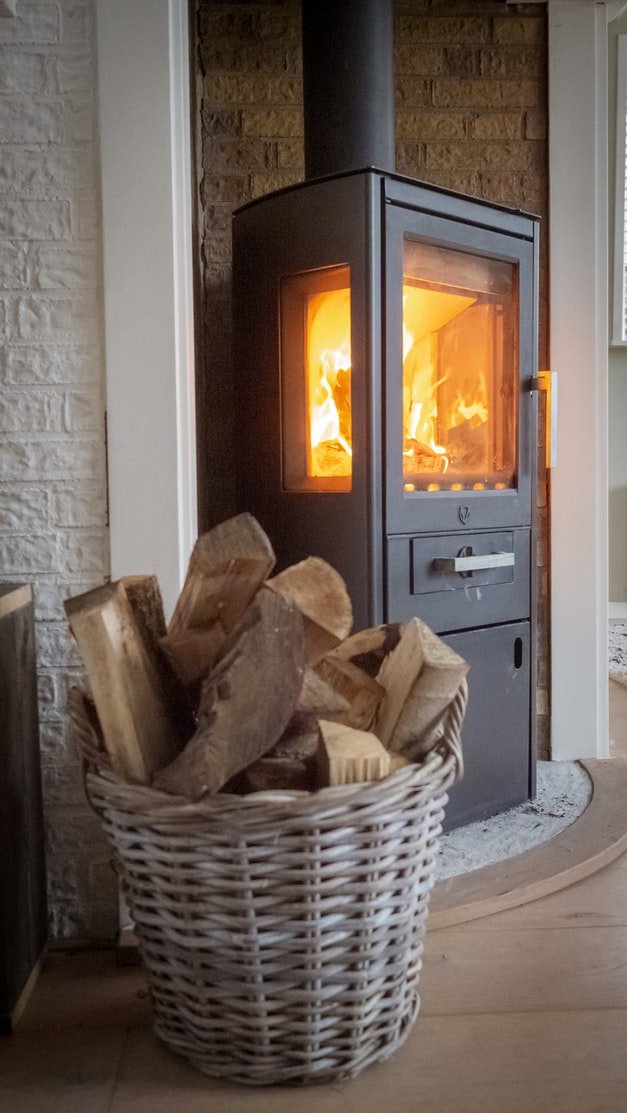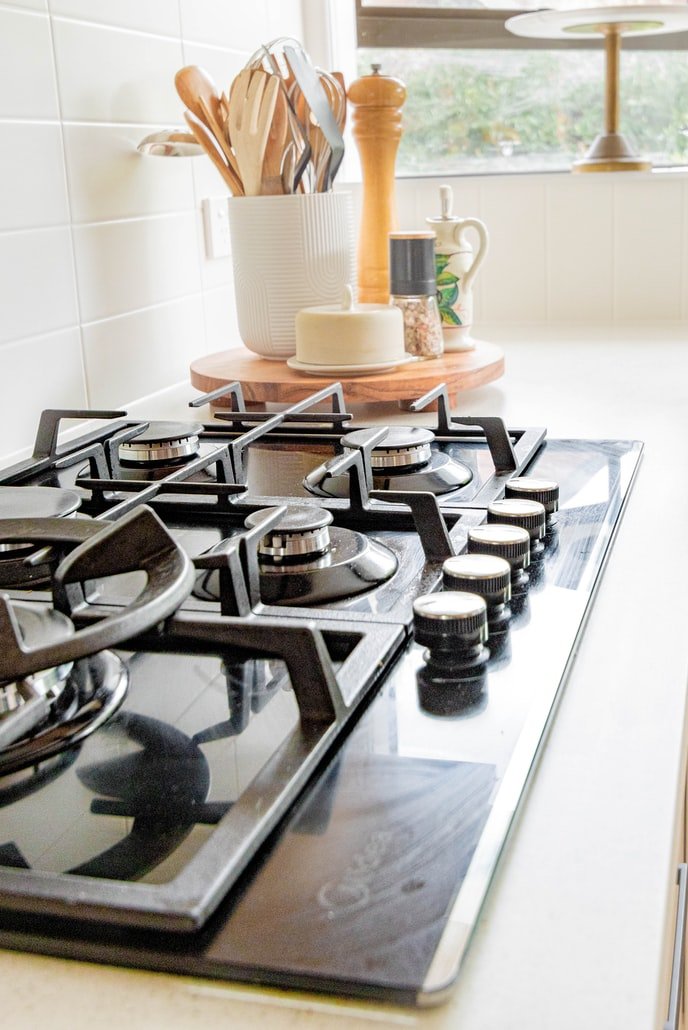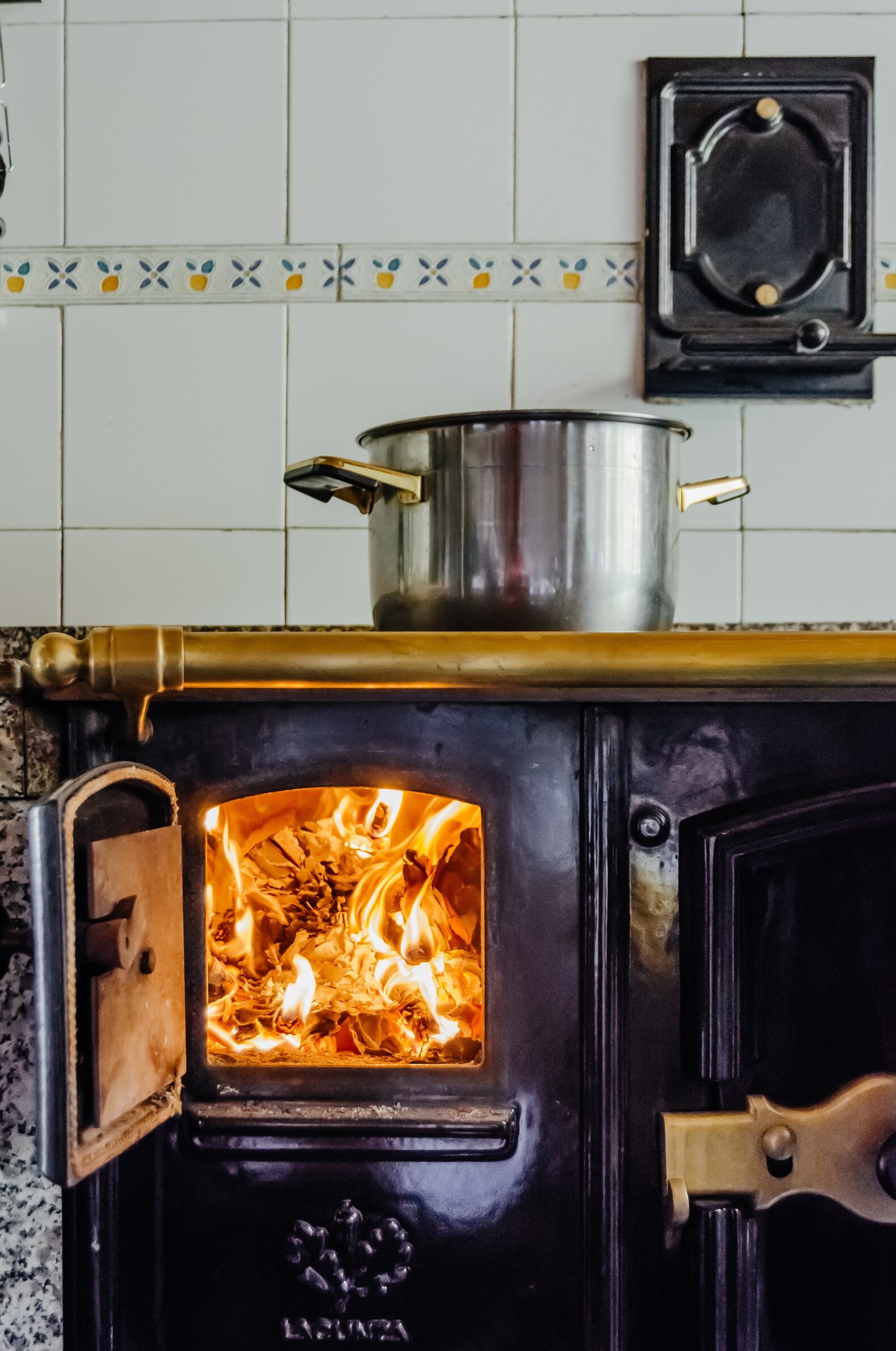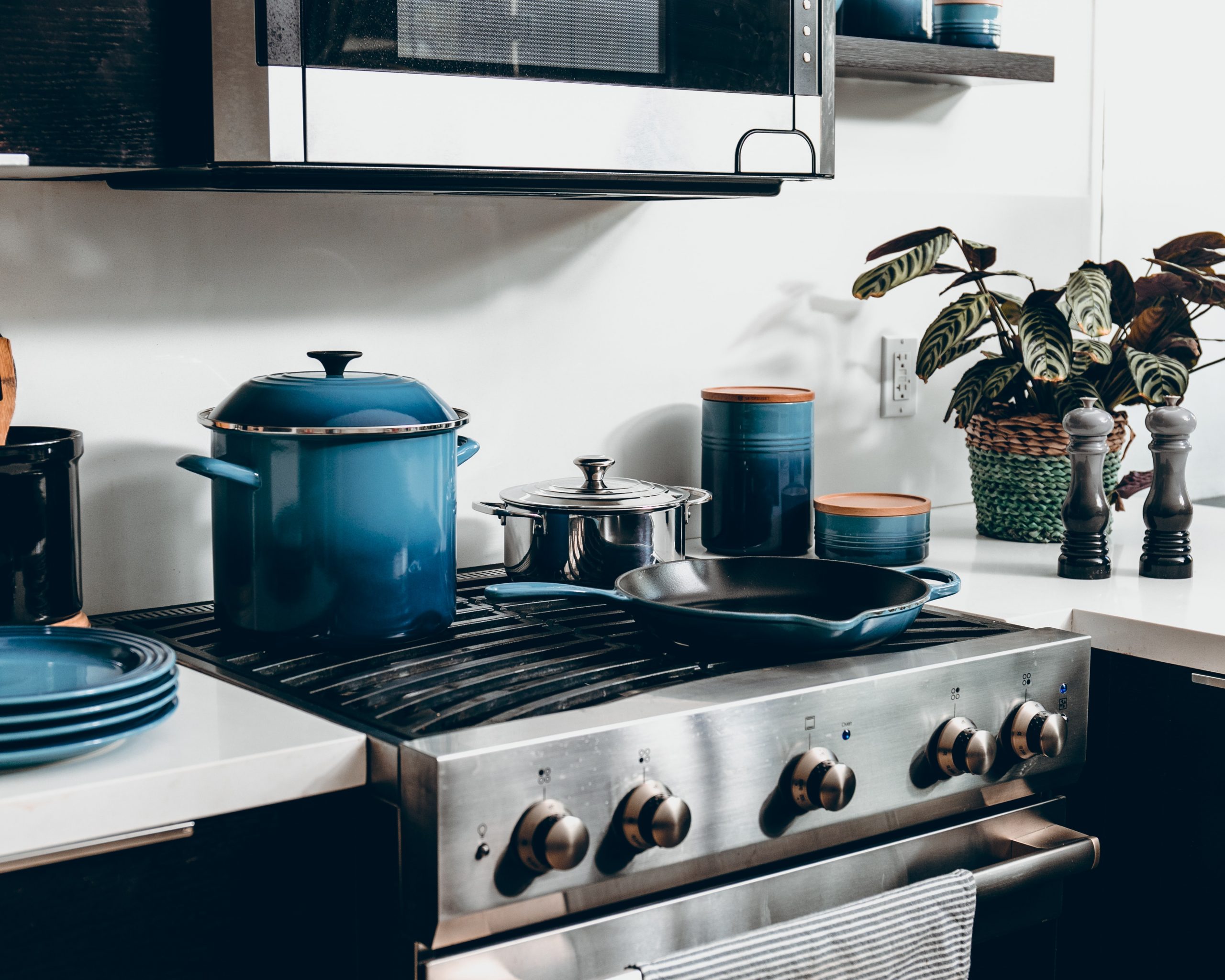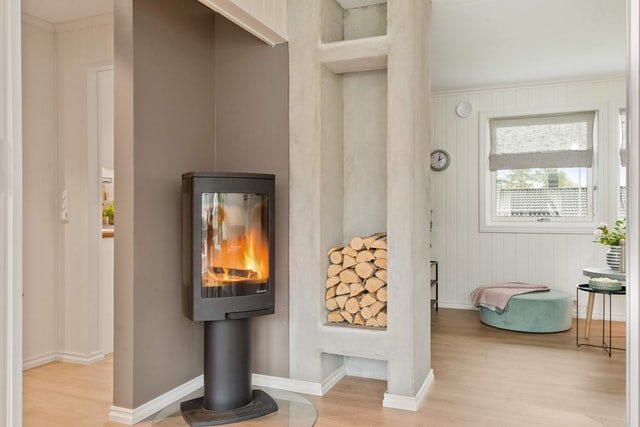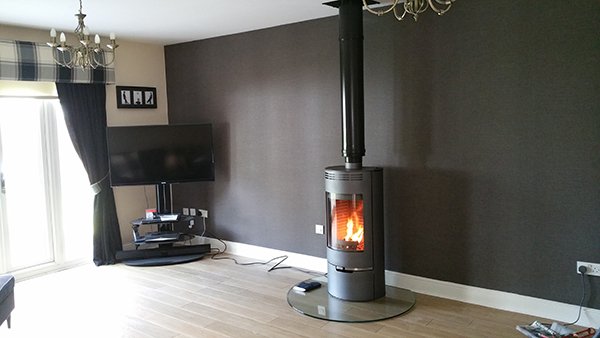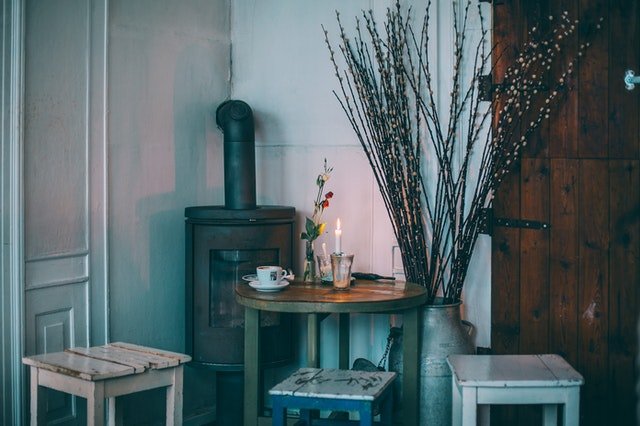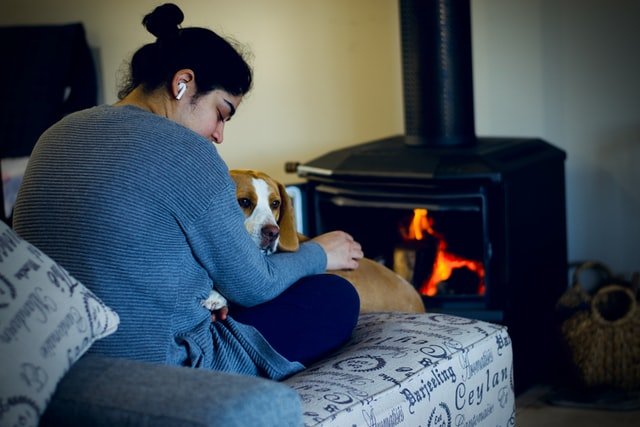What Kind of Wood Works Best for Wood-Burning Stoves?
Nothing beats hearing the crackling sounds of logs burning on high-quality wood-burning stoves. And if you’re searching for wood to feed the fire, you need to know how each burns differently.
This article will break down the best to the worst types of wood to use for your stove.
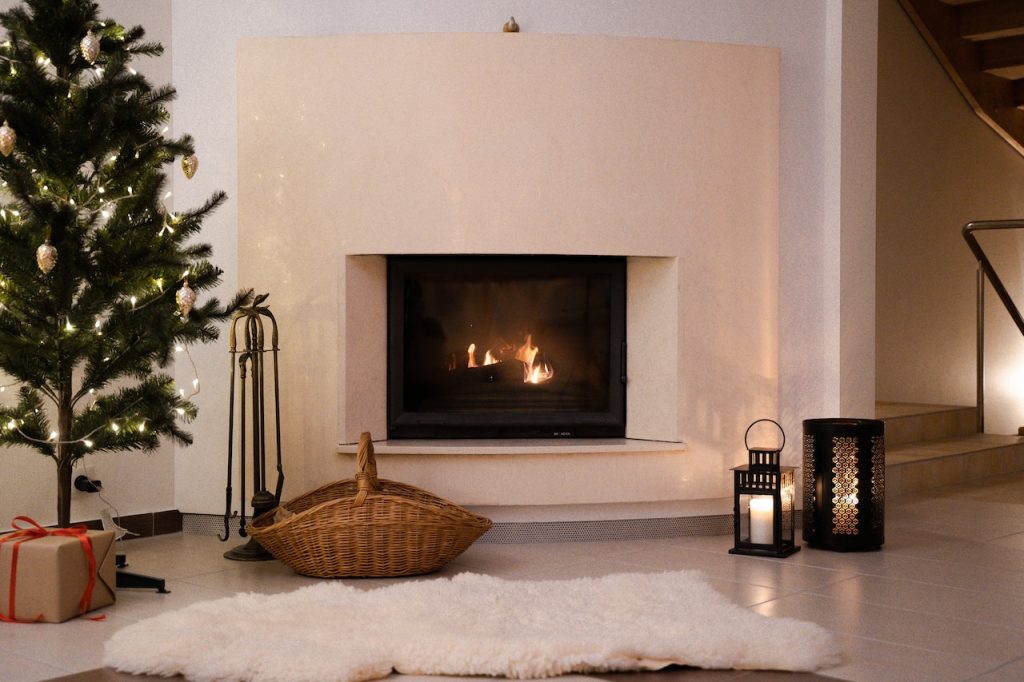
The Ideal Wood
Ash: This is undoubtedly one of the best options for burning. Not only does it create a stable flame, but it also releases a good amount of heat. It is possible to burn ash even if it’s still green. But if you want to get the most out of your log, choose one that is dry.
Thorn: If you are concerned about smoke, then thorn would work best for you. It produces a good heat output and burns slowly.
Beech: This wood is another variant that burns well. However, unlike ash, you cannot burn it during its green phase since it has a high moisture content.
Hawthorn: Are you looking for a wood that has an excellent heat output? Then you should consider the slow-burning hawthorn.
Good Wood
Pine: This wood produces a good flame. However, be mindful of its resin sap, which could accumulate in the flue of your chimney. Clean the resin sap whenever you can to avoid a chimney fire.
Cedar: Cedar creates that classic spit and crackle when burning logs. This can be traced to their porous features and natural oils. Although it doesn’t create a big flame, its fire does last for a long time, producing intense heat. Most people who own wood stoves or love exploring the wilderness often use cedar for kindling.
Oak: This type of wood is widely used in the UK for various projects. It is often used to make furniture, but it also serves as excellent firewood. Oak burns slowly and produces a small flame. If you want the oak to burn well, choose variants that have been seasoned for more than two years.
Birch: This wood can also be burnt when it’s still green. Birch is also notable for producing good heat and having a strong flame. If you’re looking for the best firewood of this type, you should choose yellow birch or black birch. However, keep in mind that birch has many varieties, and not all of them have the same ability when used as firewood.
Adequate Wood
Sycamore: This type of firewood is good enough to produce a decent flame, but its heat output isn’t the best. It also has a high moisture content, so it’s best to use it only when it has been seasoned for a few years.
Elm: This wood provides a decent flame but needs to be dried out for two years or so. Its high moisture content doesn’t make it the best option, but it is still usable as firewood.
Larch: Just like oak and elm, this type of wood needs to be seasoned for years before being used as firewood. Additionally, just like pine, it contains sap that can accumulate in the chimney flue, putting you at risk of a fire. Make sure to clear out sap deposits to prevent a disaster from happening.
Poor-Quality Wood
After going through the types of wood that burn well, we can now discuss which ones produce poor flames. If you can do so, avoid attempting to use the following as firewood:
- Alder
- Chestnut
- Eucalyptus
- Fir
- Holly
- Laburnum
- Spruce
Conclusion
A wood stove in Scotland would not be complete without quality firewood to keep the flame burning. However, not all firewood is made the same. If you want great heat output and an intense flame, make sure to select the best from this list.
At Stove Scotland, we work with customers who want to experience the wonders of having log burning stoves. Scotland and UK locals who are interested in our products and services can always reach out to us. For more details about our wood-burning stoves and installation services, contact us today.
Stove Not Working? Might Be the Spring and Autumn Syndrome
Spring and Autumn Syndrome is rampant this time of the year. And no, we're not talking about a Seasonal Affective Disorder that affects people.
Spring and Autumn Syndrome is usually connected with smoke blowing back down your chimney/flue when you start your fire, which is highly inconvenient and can smoke out your house! It happens when the air within the chimney/flue is colder and heavier than the air outside, resulting in a cold plug of air in the chimney/flue.

How the Stove and Flue Should Work
The stove and its flue use the temperature variations between the interior and the air outside. Under normal conditions, the air inside a home is usually warmer and lighter than the colder outside air, resulting in a pressure difference that induces a natural updraught inside the flue – where warmer air has to rise through the flue due to the greater pressure.
This natural draught exists whether or not the stove is utilised, and the larger the temperature differential, the stronger the updraught. When hot combustion gases are injected into the flue, this process is enhanced, allowing them to be effectively expelled into the atmosphere.
When the temperatures are reversed, updraughts occur. For example, on days when it is unexpectedly warmer outside than indoors, as is typical during abnormally hot spells in spring or fall. This is when lighting your stove becomes problematic since there is no natural updraught to kick-start the process.
The air within is colder and heavier than the outside, resulting in a heavy cold 'plug' in the flue that tries to fall back into the room, causing a downdraught. You won't realise anything is wrong until you try to fire your stove. However, it is pretty simple to deal with if you know the factors that create spring and autumn sickness.
Spring and Autumn Syndrome: How to Handle It
1. Start your fire with firelighters rather than a newspaper. Newspaper burns rapidly and with little heat, yet you want to warm up the chimney/flue. Natural firelighters are often recommended.
2. Build the fire incrementally. Begin with a firelighter and dry kindling. After igniting, leave the stove door ajar. Wait until the kindling is well-burning before adding a small log. Wait until the log is well-burning before adding another tiny log. When all of the logs are well-burning, close the door. If the firebox begins to fill with smoke again, open the stove door and keep it ajar for a few moments longer.
3. Open your doors or windows. You may need to open a door or window to allow more draughts into the room to assist the smoke in breaking through the cold plug of air in the chimney/flue.
Final Thoughts
If smoke continues to enter the room, discontinue use. Allowing the smoke to "naturally" dissipate may cause your family members asphyxiation brought about by smoke inhalation. Please seek expert guidance and refrain from using the stove until the problem has been discovered and corrected.
Stove Scotland provides a comprehensive professional maintenance and chimney sweep package to ensure that you and your family may enjoy your stove for many years to come. Maintain your wood burning stoves by reaching out to our team today!
How to Best Maximise Your Wood-Burning Stove’s Performance
Wood-burning stoves work wonders for every home. Not only do they come with beautiful, sleek designs, but they also offer a wide range of functionality. Additionally, wood-burning stoves are built to deliver higher performance for efficient heat production, offering up to 3x more heat even with only a few pieces of firewood.
Today, efficiency is as important as the appearance or usability of a wood stove in Scotland. After all, it’s important to be more environmentally conscious, so sustainable products, appliances, and systems are always the best options.
The good news is that wood is 100 percent biodegradable, easy to find, and adds a rustic feel to your home. What’s more, most wood-burning stoves emit very low amounts of carbon and are very energy efficient.
Are you interested in getting a wood-burning stove for your house? Before you make your purchase, make sure to reckon its full functionality first! Keep on reading to find helpful, fantastic ways to maximise your stove’s performance.
Below are the best ways to get the most out of your wood-burning stove.
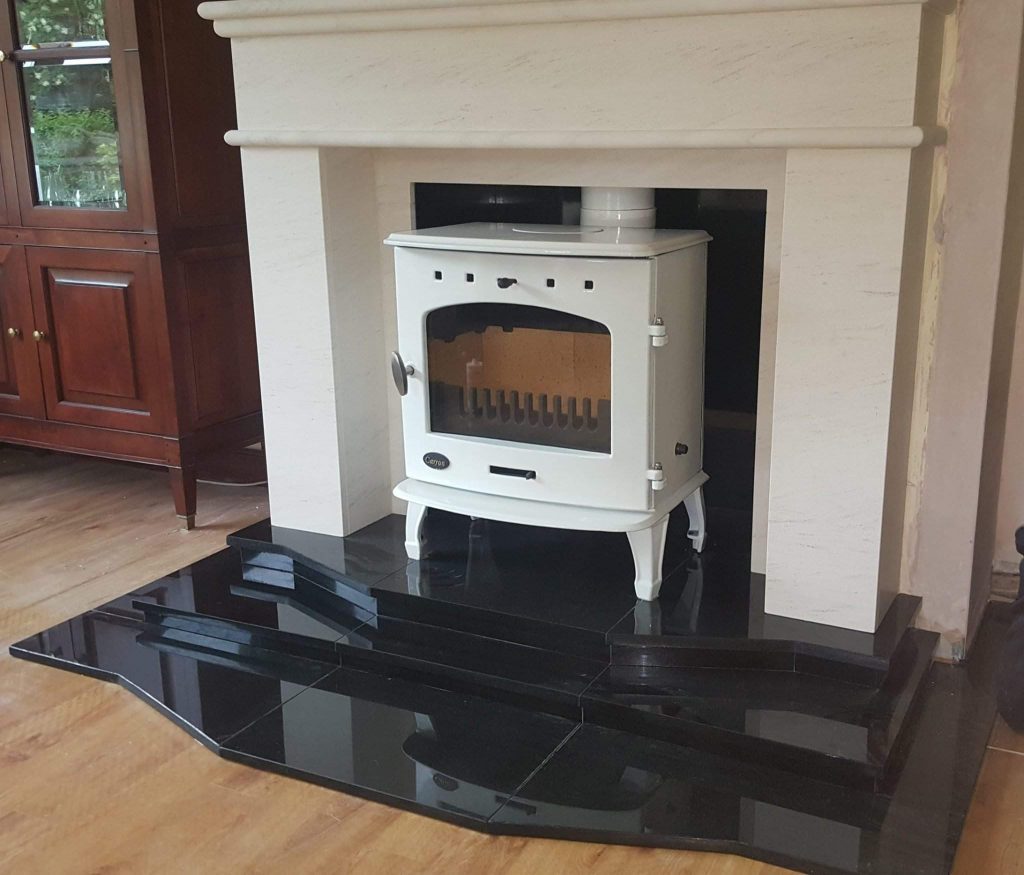
Step 1: Pick the Best Spot
One of the first considerations before you purchase anything is to find the right spot for your stove installation. For instance, you’ll need a chimney for a free-standing wood-burning stove. This might be a little tricky, though, so you may need advice from a professional.
Step 2: Choose The Right Size
Make sure to pick a stove that will fit the size of your space. Be wary, as some smaller size wood-burning stoves may come with unreasonable prices.
If you need help measuring the precise size, you’ll need to get the exact, reasonable prices, then make sure to consult with stove fitters in Scotland.
Step 3: Choose The Correct Fuel Type
It’s recommended to go for dry wood with a moisture content of 15 to 20 per cent, so keep this in mind when choosing wood. Note that different types of wood have varying heat values. For example, oak and maple produce high heat quickly, while hemlock and white pine aren’t quite at that level.
Step 4: Tidy Up Your Chimney
Entrapment of dirt in your chimney may suck up the heat and restrict airflow to the fire. Regularly cleaning and maintaining your chimney will do good for your wood-burning stove.
Step 5: Build Just The Right Fire
Need help building a fire more efficiently and skillfully? Here are some tips from our experts at Stove Scotland:
- Use two or more logs.
- Keep the logs close together; put the bigger logs at the bottom and the smaller ones on top.
- Make sure there is sufficient airflow.
- Light the fire from the kindling at the top.
While this process requires meticulous precision, practice makes perfect! Or better yet, ask help from a professional who handles wood-burning stove installations.
Step 6: Don’t Stack Too Much Wood
Check for thick and dark smoke so you can save more of your fuel. Remember to add small pieces of wood along with your regular blocks to maintain a consistent temperature.
Step 7: Manage Ventilation
Ensure that the air vents are closed to allow for the fire to keep burning. Regularly checking and managing the airflow leads to much less waste.
Step 8: Remove The Ashes
When you kill the fire, make sure to clean out most of the ashes. You can leave just a little to support future burning processes.
Conclusion
Wood-burning stoves can do so much as they are designed to provide needed warmth efficiently. Overall, one great way to maximise your stove’s performance is to maintain it regularly and ask for help from professionals. Make sure to have your stove and chimney checked and cleaned by experts at least once every year. Hopefully, these tips and tricks can help you save more energy, reduce waste, and enjoy the full benefits that a wood-burning stove offers.
If you need help setting up your wood-burning stove, reach out to us here at Stove Scotland. We prioritise delivering reliable services such as fireplace installation and maintenance at an affordable price. We’ll make sure that your stove perfectly fits the style and dimensions of your room. Contact us today!
Here Are the 5 Steps to Light Your Multi-Fuel Stove
A multi-fuel stove can burn more solid fuels than wood. It’s versatile enough to handle most solid fuel types.
If you've got a multi-fuel stove or a multi-fuel camping stove, you know that it’s nearly impossible to start it on your own. There has to be at least one other person around who knows how to start the stove.
Starting a Multi-Fuel Stove: A Step-by-Step Guide
How do you start a multi-fuel stove? It's not as if you can just light a match and the thing lurches into life, as you might expect from a regular gas stove. So what do you have to know, and what steps do you have to follow to get your multi-fuel stove going?
- Start with the primary control air vent, which is at the bottom of your stove. Open this to allow constant airflow to deliver sufficient amounts of oxygen through the coal, fire logs, etc. In some cases, if your multi-fuel stove has a secondary control, you need to leave this half-open.
- Create your firebed using newspaper, dry kindling wood and firelighters.
- To light the firebed, you need to ensure the fire door is slightly open.
- Once you get glowing embers from your kindling wood, add your solid fuel. After this, close the fire door. If you have a top or vent, shut it down as well.
- When the fire is already lit, you only need to add more solid fuel when necessary. You can control the heat output through the bottom air vent, in which for more heat, open it, while if you want less, close it.
How to Maintain Multi-Fuel Stoves
A multi-fuel stove needs basic maintenance to ensure it stays in good condition. Maintenance also helps maximize its efficiency.
One of the easiest ways to do this is to ensure you get rid of excess ash from the stove. Make sure ashes don’t pile up; otherwise, this is when a lot of problems can start from. What you need to remember is there should be no ash on the underside of the stove’s grate. Therefore, you need to make a conscious effort to empty the ash pan regularly.
Your ash pan must be in place securely after you clean it. This ensures it continues to catch ash the next time you use the stove.
As for the glass in the stove door, clean it regularly. You can use a damp newspaper dipped in ash to clean it. On the other hand, you can get a cleaning solution that is designed for stoves. Make sure you remove dampness and residue, and the stove is completely dry before you use it again.
Light Up that Multi-Stove
Many people are scared to get started with multi-fuel stoves. But it’s actually quite easy. These stoves are simple to start and operate, even if you've never used one before. Use these steps to get started and eventually, you’ll get the hang of it! With this, you can save more money on extra money or central heating.
Get quality multi-fuel stoves here at Stove Scotland. We are experts in stoves and fires all over the UK and Scotland. Contact us today to receive a free quote!
7 Excellent Wood-Burning Stove Decorating Ideas You Can Use
Wood-burning stoves or fireplaces are a traditional décor feature that adds comfort and warmth to any room. Wood and gas-burning stoves are increasingly popular because of their antique forms and lines.
Classic-looking home stoves are used in antique and rural settings and to create a contrast in a modern or any other area. There are also ultra-modern and fresh ideas to create a stylish modern area; see them all below!
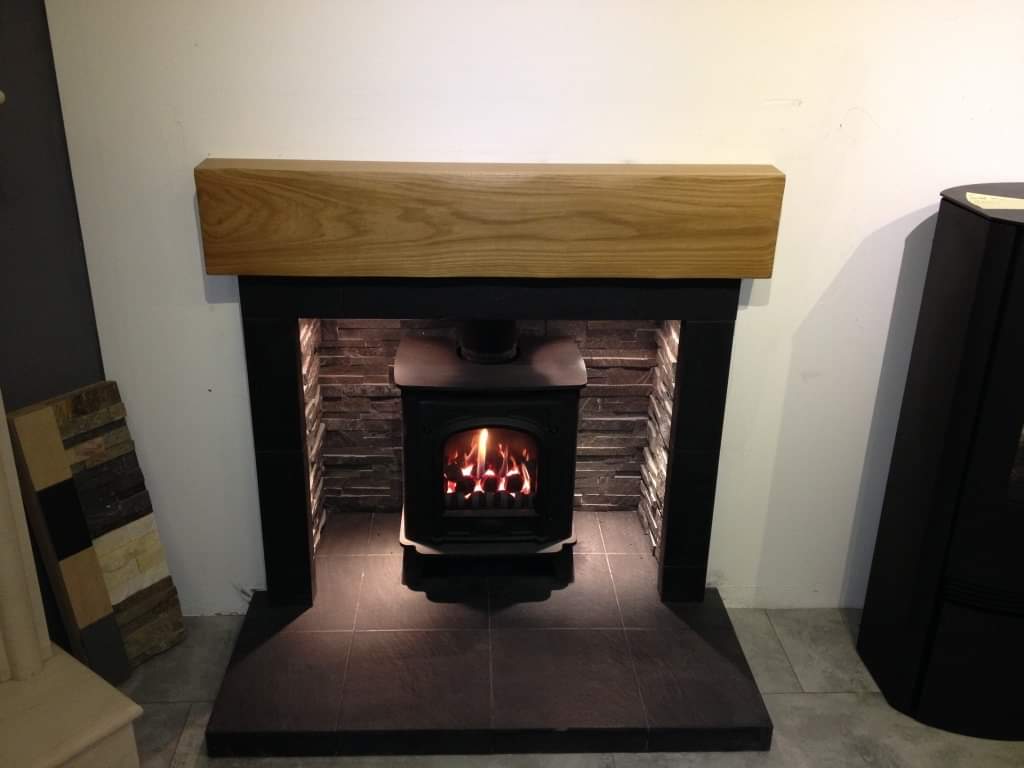
7 Excellent Wood-Burning Stove Decorating Ideas You Can Use
1. Install Woodburner in a Feature Wall
Woodburners have been used for more than 200 years, but flatscreen TVs are a relatively recent creation. They may, however, coexist in modern living spaces. As part of a feature wall, you can put a wall-mounted TV above your stove as long as the distances involved conform with the legislation and the manufacturer's recommendations.
2. Install a Wooden Mantel Above the Burner
A wooden mantel over a wood burner is a popular method to decorate around it. A wooden mantel appears to emphasize the stove's rustic charm. It is entirely up to you how rustic you want to go. Some individuals prefer reclaimed wood with lumps and bumps (which may not be suitable for your cup of tea), while others prefer a smoother piece of wood.
This design works on large and small fireplaces. All you need is a suitably sized piece of wood.
3. Include Artwork on Top
Install wall art behind the wood-burning stove to give visual interest to the area around the fire all year. Metal advertising signs provide a quirky and eye-catching approach and are available in various colours and shapes. Alternatively, incorporate an artwork that complements the colours of a rug or curtain.
4. Accessorize!
Display beautiful plants and exquisite decorations to accessorize the space around your wood-burning fire. Purchase a fire toolbox for your fireplace, including tongs, a brush, and an ash-scraper to help clean up and make your hearth appear appealing when not in use.
5. Try an Open Floor Layout
A double-sided wood burner fireplace as the focal point of an open-plan space is one of the most remarkable wood stove ideas for living rooms. This may need a bit more effort, but it is well worth it.
Install a free-standing fireplace or a log-burning stove if you take down a wall to create an open-plan living area. This little open fireplace concept creates an eye-catching focal point while also radiating heat all around. If you're undertaking structural changes, you should hire a professional contractor.
6. Decorate the Surroundings with Brick
Bricks may be used to adorn your wood-burning stove instead of tiles. Again, you must ensure that you select something appropriate for that purpose. As you can see, the outcome may be somewhat effective.
It does not have to be entirely made of brick. For a beautiful juxtaposition of urban and country construction traditions, mix the bricks with natural stone.
7. Make It a Social Area
Nothing is more appealing than a sofa by the fireplace, and you can easily spend hours sitting by the fire with a buddy, setting the world to rights. Arrange comfy sofas around a traditional wood-burning stove to entice family, friends, and guests to remain a little longer in front of the flickering flames.
Conclusion
Wood-burning stoves are excellent additions to any home since they complement and improve the décor. Not only that, they're an excellent heat source for the colder months, so you can comfortably sip a hot drink while you bond with family near the wood-burning stove.
Are you looking for stove fitters in Scotland? Stove Scotland can help! Our team is composed of professional tradesmen who are all experts in installing stoves. We take a custom approach to each space, even if you don't have a chimney so that you can achieve the wood burner stove of your dreams. Don't hesitate to contact our team today for a free quote!
Should You Use Coal or Wood for Multi-Fuel Stoves?
Should You Use Coal or Wood for Multi-Fuel Stoves? - It can be exciting to get a stove system installed onto your space as it brings forth so many possibilities. The number of dishes that you can cook expands greatly. Plus, you can definitely feel much warmer and cosier with a stove without having to face a spike in your energy bills because of heaters.
Multi-fuel stoves are slowly gaining popularity as an alternative to wood-burning stoves, which are considered the standard when it comes to stove systems. This rise may be credited to the fact that multi-fuel stoves can burn coal and wood at the same time, as opposed to stoves that are only able to use wood.
However, considering that multi-fuel stoves can burn both coal and wood, this sparks questions about what kind of fuel you should use. Keep reading to learn whether one fuel source is better than the other for your stove system.

Assessing the Options
Coal and wood each have their own perks. For example, there’s just an abundance of coal types. Normal coal, smokeless coal and more can be easily picked up from the store, meaning there’s no need to worry about supply. Most manufacturers of multi-fuel stoves will recommend smokeless coal the most to avoid the stove from getting clogged with gas and soot.
Wood can produce a lot more heat than coal, though there may be a bit more smoke and soot involved with your stove system. There should also be a regular supply of wood if you live in a rural area to buy it for cheap. You can go the old-fashioned route too, where you just head out, chop some lumber and bring it back home to keep warm.
Do note that wood-burning stoves are available if you’re hoping to solely burn wood. It stands to reason that multi-fuel stoves may be for coal rather than wood. Don’t just consider your various options for the fuel sources, but the stove systems themselves. Get in touch with a stove expert who can help you pick out and install the right stove for you.
Checking the Grate
Cooking grates are usually used in stove systems to help with whatever fuel source is being burned. Your multi-fuel stove may already come with its own grate, so be sure to check it and take it into consideration when picking a fuel source.
Coal is best-suited for raised grates, while wood may be better for flat grates, like what’s usually used for wood-burning stoves. It’s more likely the multi-fuel stoves will feature raised grates. You can consider changing the grates if that’s what you wish.
Understanding the Dangers
Remember to keep in mind that it’s best to stick to only one source of fuel. Even if multi-fuel stoves were made to accommodate both coal and wood, that doesn’t mean that you should use both simultaneously or interchange them regularly. It’s best to pick and just stick to one.
Avoid combining wood and coal, as well as take periods if you’re changing your fuel source. Anything short of that won’t bode well for your stove’s flue lining. You’d likely need some expert assistance to mitigate the issues that will arise because of it.
Conclusion
In summary, either fuel source can be used with a multi-fuel stove. However, coal seems like the better candidate than wood, solely because there are already wood-burning stoves on the market if you wish to use that fuel source instead.
Don’t have a multi-fuel stove yet? Stove Scotland supplies both multi-fuel and wood-burning stoves in West Lothian and around the UK, ensuring that your stove perfectly fits the style and dimensions of your palace. Get in touch with us today!
What You Need to Consider Before Installing a Wood Burner
What You Need to Consider Before Installing a Wood Burner - Around this time of year, people start evaluating their homes to see how prepared they are. As winter approaches, you must be thinking about ways to improve your home for the season. There’s probably a lot of things on your mind. After all, there’s always room for improvement.
By far, one of the best and most popular ways to upgrade your home just before the winter season is by getting a wood burner installed. Wood burners are reliable, durable, and perfect for keeping your home warm and cosy. That’s precisely how you want it to be during the winter. In addition to that, they are also energy-efficient and environmentally friendly. You can bet that you’ll get productive heat output with a wood burner in your home.

So, what are the things you must consider before installing a wood burner?
Is Your Chimney Line
The first thing you need to check is whether or not your chimney is lined. Flue lining is a clay, ceramic, metal conduit installed inside a chimney. The flue contains combustion products and directs them outside. Proper lining protects the chimney walls from heat and corrosion.
You can conduct a chimney integrity test or a smoke test to check this. This will tell you if the flue is fit for use or not. If it’s deemed not suitable for help, it’s because smoke and harmful emissions like carbon monoxide might enter your home. This could lead to more than just a mild inconvenience. There’s a high chance that the situation could become dangerous for everyone in the house.
If your chimney fails the test, you will have to get it lined before anything else. Make sure that all repairs are made before you get a wood burner installed.
Do You Live in a Smoke Control Area?
A smoke control area is legally defined where only approved fuels or exempted appliances can emit smoke. One example of an exempted appliance is a wood-burning stove. You can check the Department for Environment, Food & Rural Affairs (DEFRA) for the list of approved fuels you can use.
Of course, according to them, wood burners are exempt, but the reality is that not all of them are. It’s best to make sure with your local authority or check the list before you buy anything. Wood burners can also burn certain types of fuels, so make sure it’s on the DEFRA list first.
What About Wood?
Before you go out and buy a wood burner, make sure you have ample wood access. You can’t get the fire going without it. At the same time, you should also take the time to think about where you’re going to store the wood. Getting a wood-burning stove should make your life better and easier. See to it that you cover all your bases before opening your wallet.
Summary
Installing a wood-burning stove just before winter is probably one of the best investments you can make. But before you do that, make sure that you consider all factors that might affect it. For example, there are elements that you must prepare inside your home.
You also need to do some research about the laws in place in your area. When you’ve done your due diligence and you’ve checked all your boxes. Go ahead and get yourself that wood burner. You won’t regret it, and you can be sure to enjoy all the time you spend indoors.
If you need help with stove installation, we’re the right people to help you. Here at Stove Scotland, we will work with you to ensure that your stove will perfectly fit the style and dimensions of your room. You can count on us to get your stove right. Contact us today and let us know how we can help you!
How to Properly Clean Your Stove Glass
As your wood burners work too hard to keep you warm and comfy during the cold winters, the glass slowly gets dirty and blackened over time, too. You can clean your stove at any given time, but Spring may be the best time to do so if you want to restore the log burner close to its original state.
First of all, because it’s now brighter both in the mornings and evenings, you could better see how murky the stove glass really is. Also, you won’t be using your wood burner as often, so you can enjoy seeing that stove’s sparkling clean glass for much longer.
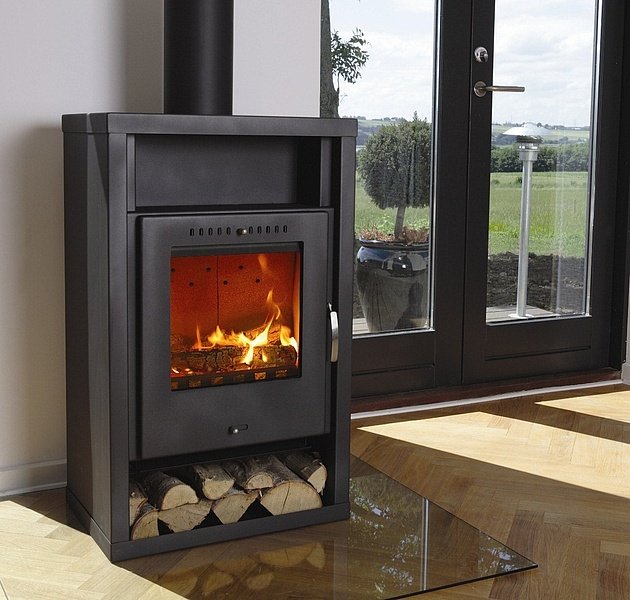
But how do you clean the wood burner glass properly? Here are some tips from Stove Scotland, your trusted stove installers:
What to Do Before Starting
Make sure that your stove glass has already cooled down enough before you start the cleaning process. Don’t believe those who say you need to clean the glass while it’s still warm. You can still clean it thoroughly even when it’s already cool. It’s safer that way, too.
Before cleaning the glass, sweep out the ashes from the stove’s bottom and keep them in a container as you could use them later for cleaning (unless they’re coal ashes). You should also loosen and remove any debris on the glass door and the surrounding parts.
Clean Using Wood Ashes and Old Newspaper
Have your cleaning tools and materials ready You are going to need several sheets of old newspaper, leftover wood ashes, a bucket of warm soapy water, and a cleaning cloth. As a reminder, you shouldn’t do this method with coal ashes because it’s likely that there would be hard particles that could be damaging to the glass.
Now that you have everything ready, here’s what you should do:
- Wipe the glass from the inside using the soft cloth dampened with soapy water. You can significantly lessen the soot buildup in this step but know that it’s going to need a lot of effort on your part!
- Scrunch up the sheets of old newspaper until you have paper balls. You are going to use these to scrub the glass.
- Dip one ball into the soapy water and then into the container with old wood ashes, then gently scrub the stove glass using circular motions. You can repeat this step multiple times until you achieve the desired result.
- Once you’re done, you can wipe away any residue using a clean cloth.
Other Options for Cleaning
Perhaps you’re not comfortable with the idea of using wood ashes to clean the stove glass. You can use these other options and get similar results:
Oven Cleaner
If you prefer using chemicals for cleaning, you can opt for an oven cleaner or any household cleaning solution to thoroughly clean the stove glass. Just ensure that the product you’re using can be used on glass. Also, be mindful of the cast iron parts that might get damaged by the chemical solution.
Bicarbonate of Soda and Water
Another option is the bicarbonate of soda and water, which is proven effective in cleaning stove glass. This is an excellent option if you don’t like the idea of using chemicals for cleaning.
How to Keep the Wood Burning Stove Glass Clean
As mentioned, the best way to ensure the wood burner glass stays clean is by burning the stove correctly. When the fire is producing as little smoke as it possibly can, your glass will be cleaner than usual, too. The furnace should also burn clean fuels at an efficient temperature.
You should also burn dry seasoned wood or at least a low sulphur smokeless coal. It’s because wet wood produces more smoke compared to dry wood.
Conclusion
Keeping your wood burner and the stove glass clean is one of the best ways to ensure that your stove lasts long. By following the tips shared in this article, you can ensure that the glass will be squeaky clean and beautiful again. If you find that no matter how hard you clean, you can’t restore your stove to its former glory, you might want to consider calling a trusted team of fireplace installers in Scotland so you can have a new one.
Stove Scotland offers fireplace installation in Scotland and the UK. Contact our team today, and we’ll make sure you get a stove that perfectly matches your needs!
Reasons Why Your Wood Burner's Glass Door Is Turning Black
A wood-burning stove is a nice-to-have unit, especially in the cold breeze of Scotland. It’s an excellent source of heat, plus it’s quite lovely to look at the dancing fire while drinking your favourite cup of coffee.
If you are a wood-burning stove owner who enjoys watching the fire from the stove or who simply wants to keep the unit clean, the last thing you want is to see dirt or soot on your stove’s glass. Still, the soot that you see is part of the unit’s environment since the stove burns wood. It’s inevitable, yet you can do something about it. But, if your stove glass is regularly going black every after you use it, perhaps there’s something wrong with the way you’re operating it.
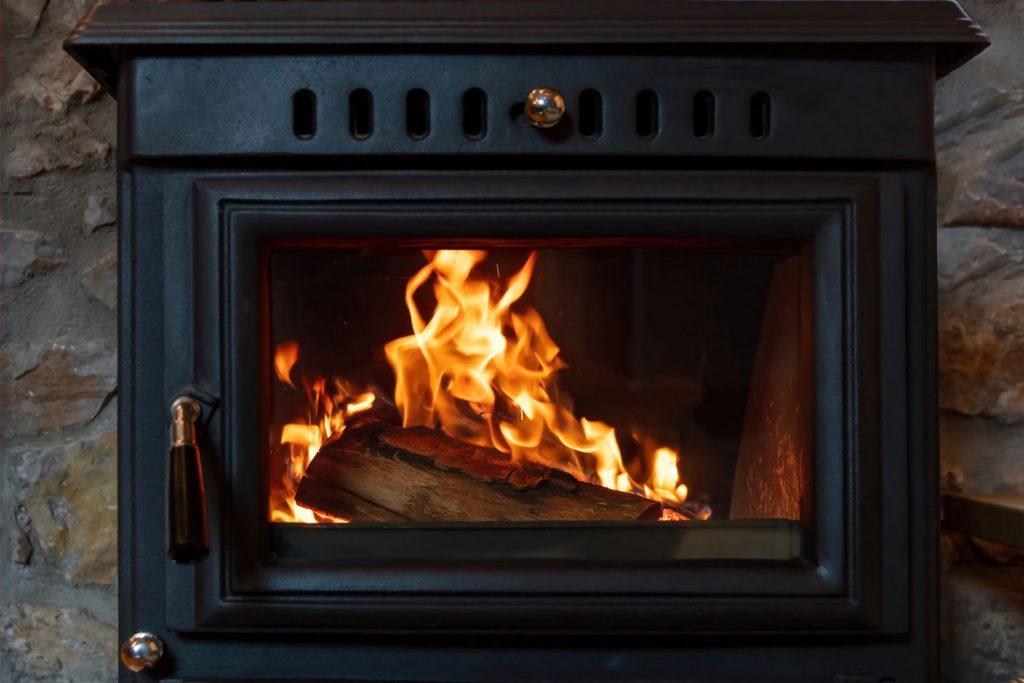
To help you prevent the blackening from happening, here are some of the reasons why your wood burner’s glass always turns black:
Reasons Why Your Wood Burner's Glass Door Is Turning Black
1. You Might Be Burning Unseasoned Wood
You should only burn seasoned wood, meaning the wood should be cut, chopped and left to air for at least 12 months before using. This way, the moisture level from the wood will drop to around 20-25%, preventing excessive smoke while it’s burning.
If you use unseasoned wood in your wood burner, chances are soot, tar and creosote will form inside the flue system and on the glass because of the excessive smoke being produced. If these compounds are developed, the glass on your wood burner will turn black.
2. You Might Be Using the Airwash Incorrectly
Nearly all wood-burning stoves available have a built-in airwash system. It’s one of the benefits of modern wood-burning stoves today because it helps prevent soot from settling on the glass.
If the airwash system is not functioning the way it’s supposed to work, there might be something wrong with how you’re using it; that’s why the glass on your stove is turning black. Try not to close the airwash vent completely while the stove is on so that it can do its job.
3. You Might Be Overloading the Stove
Another reason why your stove’s glass is turning black is that you might be overloading it, or you’re loading fuel so close to the glass. You can know if this is the case when you see some blackening in just one or two areas of the glass rather than the entire surface. That is because the fuel is burning against the glass, so the burning area turns black.
4. The Temperature Is Not Hot Enough
If your wood-burning stove is not at its maximum temperature, the built-in airwash may not function correctly. If the airwash doesn’t work, there’s a higher chance that the glass will turn black.
5. Poor Draw inside the Room
If you think you’re doing everything correctly, but the glass in your stove is still turning black, perhaps the problem is already in the ventilation in the room.
The poor draw means that the air movement from your room into the stove and up the chimney is not powerful enough. If your place has a poor draw, the smoke might linger in the firebox. If that happens, the airwash from your unit may not function correctly, leading to the blackening of glass.
Conclusion
It’s crucial to look out for your wood-burning stove so that the unit will last longer. If you think you’re practising some of the reasons, try to avoid them or create a solution to prevent the glass from turning black. This way, you’ll enjoy the view of the dancing fire in your stove, and you’ll have a cleaner-looking unit once you maintain it.
If you need some maintenance for your wood stove in Scotland and the UK, Stove Scotland is here to help! We offer a full professional maintenance service and chimney sweep package, allowing you and your family to enjoy your stove for years to come. Contact us today to get a free quote!
Here Are Ways to Get the Most Heat from Your Wood Stove
In recent years, there’s been a dramatic increase in the popularity of wood burners as they become more common in households. There are many reasons behind this, one being a carbon-neutral source of heating. Another huge benefit is its affordability. If you have a wood burner, how can you get the most out of it?
Not all wood burners produce the same amount of heat. The amount of heat it produces is measured in kW, which you need to convert to kWh to determine how many BTUs your burner will have. It can get confusing, so it’s best to use an online stove calculator.
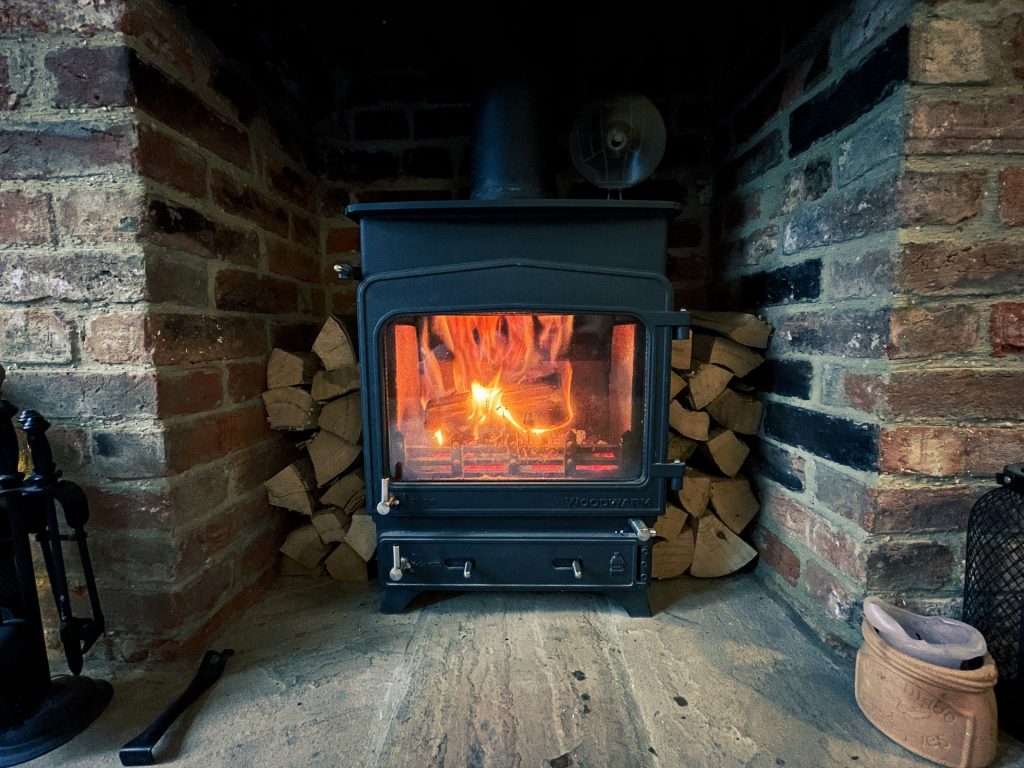
Light It Properly
The first thing you need to do to ensure you get the most from your wood burner is to get the fire burning properly. Make sure the bed is glowing hot with embers before you load your fuel inside. Then, add a couple of logs and let them catch fire before you dump all of the logs.
Use the Right Amount of Fuel
So, now that you have the fire burning, it’s time to ensure you maintain the right amount of fuel to get the most heat from the stove. It can be dangerous when you have too much fuel, so it’s important to ensure you only use the right amount of fuel for this if you want to get the most out of your wood burner.
An effective way to determine this is to check the manual to know how much fuel is recommended.
Maintain a Good Temperature
It’s not true that you will get the most heat from the burner when it’s roaring with fire. However, that isn’t always the case. Keep the temperature between 260 and 460 degrees celsius and use a stove thermometer. The thermometer has a magnet that will let you attach it to the stove pipe to track how well the stove is producing heat.
Take Control of the Air Flows
Another part to consider to get the most out of your wood stove is the air vent. Usually, a wood burner comes with two vents to allow you to control the heat levels.
There’s the primary air vent critical to keep the fire going. When the flames are burning nicely, the primary air vent can be closed slowly. This time, the secondary vent will control the airflow that goes into the stove. Now, this is when things can get tricky because it’s an art to control this specific vent.
Test it out for yourself and find a happy medium. This is also where a stove thermometer comes in handy as it will guide you if the stove isn’t hot enough, or vice versa. That way, you can adjust the air vents accordingly.
Conclusion
Wood stoves are in demand today due to the many benefits. If you’re thinking of getting one or you already have one, it’s crucial to know how to get the most heat out of it. Only then will you be able to make it extremely useful and helpful in your household.
Do you need a wood stove in Scotland and the UK? Stove Scotland will provide you with professional service at an affordable price. Get a quote today!

